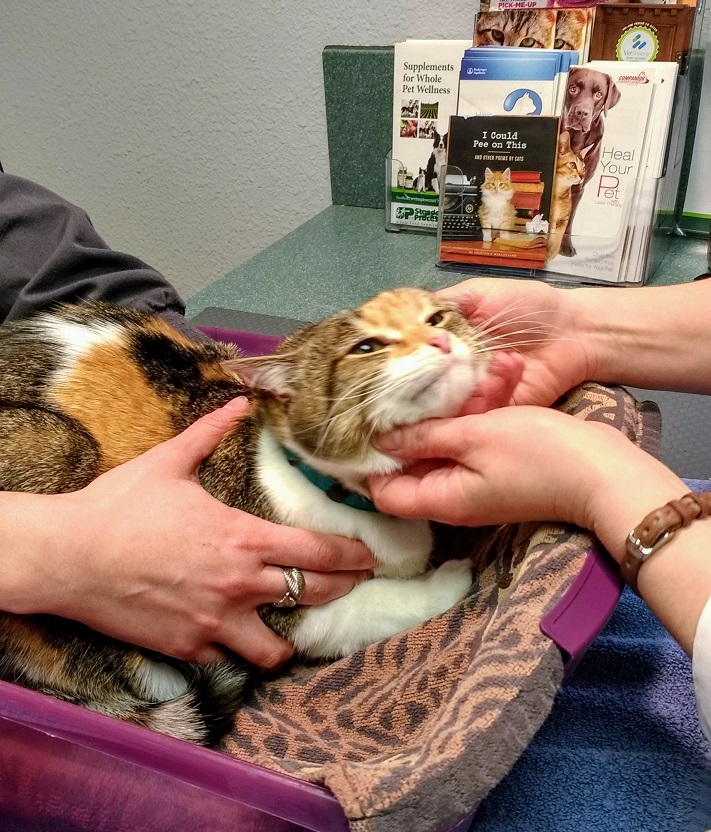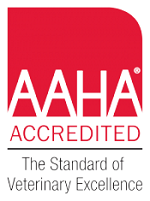
January’s blog post discussed the value of wellness labwork to help see what is going on with your pet internally. This blog post talks about the value of a physical exam and some of the things it can help to detect.
At our clinic, physical exams are thorough. Our Doctors check your pet from head to toe and make note of any abnormalities so these can be addressed if needed or monitored for changes down the road. Below are some of the things that are checked during your pet’s physical exam:
- Eyes are examined with an opthalmoscope for changes or abnormalities.
- Ears are examined with an otoscope to check for infection or issues in the ear canal or ear drum.
- Mouth is examined (as much as the pet will allow) for problems with teeth (infection, broken teeth, feline resorptive lesions, gingivitis, etc.) and gums are checked for oral lesions or growths as well as gum color and capillary refill time (which can help determine problems with anemia).
- A full body check is done to look for lumps or bumps. If found, these will be measured and recorded in your pet’s record so we can determine if they are getting larger, and if suspicious the vet will advise taking an aspirate sample to examine under the microscope to help determine if the growth is something of concern.
- A full body check can also help to detect issues with the coat and skin. The areas between the toes and bottoms of the feet are visually checked for areas of redness, irritation and/or infection. The abdomen area is also visually checked for problems with redness or irritation.
- An orthopedic exam is performed to help detect issues with mobility, luxating patellas or difficulty extending limbs. Crepidation (a crackling feeling or sound when a joint is manipulated) can help to detect the possibility of arthritis or other issues.
- The veterinarian performs an abdominal palpitation (if your pet allows) to feel the intestines and internal organs to help to detect changes in kidney size or shape, masses or other abnormalities. This does not detect every issue and can be less effective in overweight pets, but is helpful in many cases and can find issues that otherwise might have gone undetected until more advanced.
- If warranted, a rectal exam may be performed if your pet is showing signs of scooting, licking or discomfort near the anal area. A rectal exam can help to detect anal gland issues or more worrisome rectal tumors.
Of course, if you have areas of particular concern, those will be addressed during your pet’s physical exam. In some cases, additional testing may be advised. Ear or skin cytology, fine needle aspirates, bloodwork, urinalysis or radiographs may be needed for more advanced issues or when physical exam alone doesn’t provide enough information. The physical exam is a crucial and important first step in determining your pet’s health status.
Physical exams are very important for general wellness, medical issues and to make sure that problems being treated are resolving as they should. Your pet cannot tell us how they are feeling or what is bothering them, so having hands on for a complete physical exam is invaluable to your pet’s well being and health.




